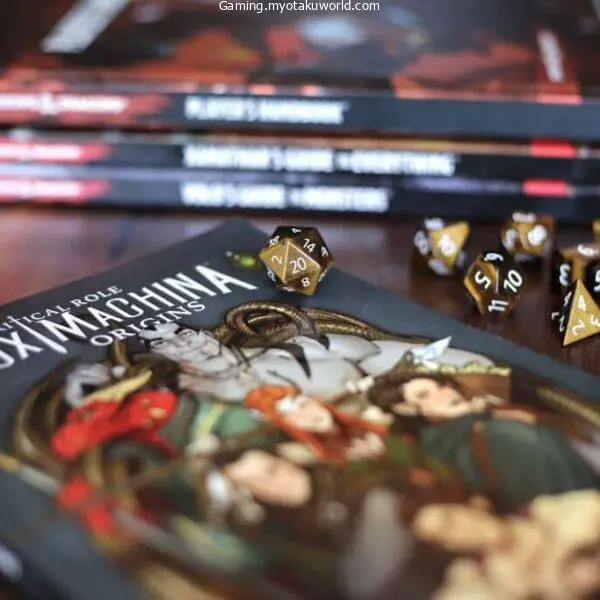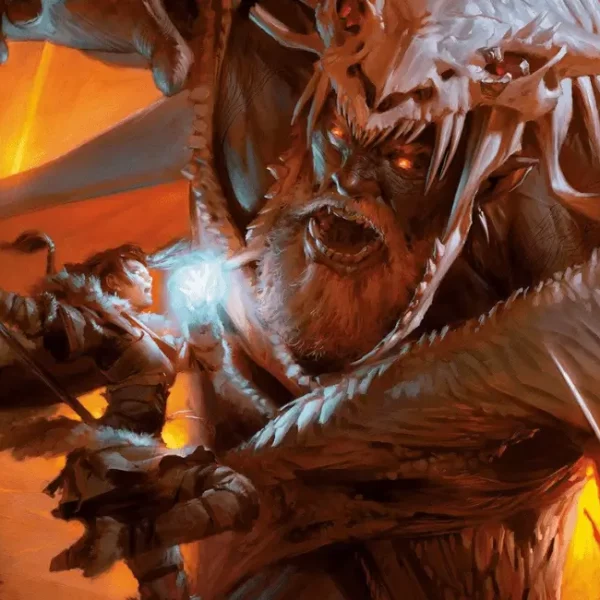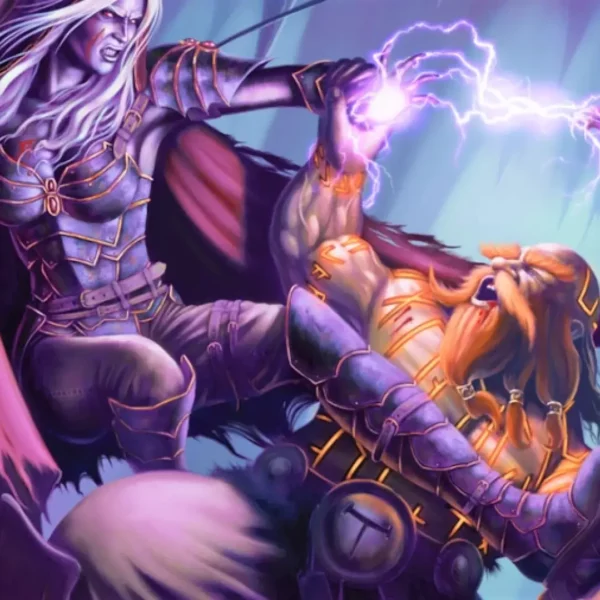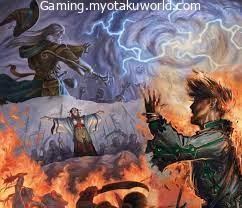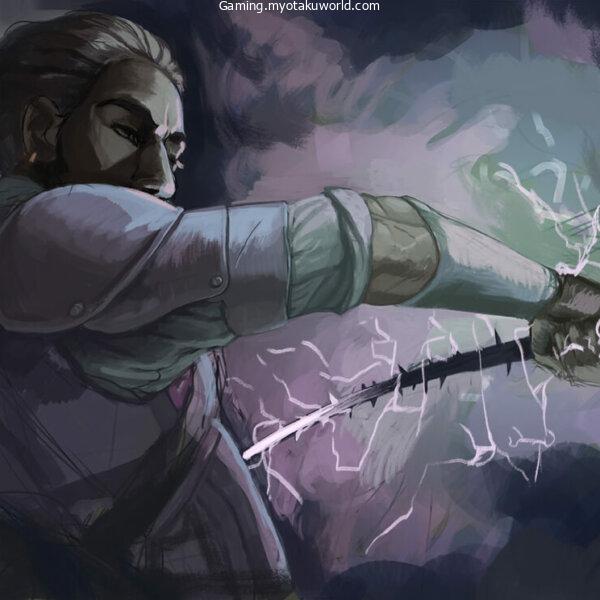It is a fun spell to use. Phantasmal Force is an extremely enjoyable spell for those who specialize in illusions.
It is often overlooked in favor of more destructive spells when you are at the level of 2 but can provide an abundance of role-playing possibilities for the right character and group.
The rules for phantasmal force are found in the Players’ Handbook on page 264.
Phantasmal Force 5e
- Illusion 2nd level
- Time to Cast: 1 Action
- Range: 60 feet
- The components: V, S, M (A small amount of fleece)
- Duration: Concentration up to 1 minute
You create an illusion that is rooted in the brain of an animal that you can see within a distance.
The target has to take an Intelligence saving throw. If the save fails, it creates an eerie item like a creature or visible phenomenon of your choice that is no larger than 10 feet and is visible only to the person who is targeted during the time. This spell doesn’t affect the undead or structures.
The phantasm could comprise sound, temperature as well as other sensory stimuli, visible only to the target creature.
The target may utilize its action to study the phantasm by making an Intelligence (Investigation) Check against your save DC.
If the check is successful the target is aware that the phantasm was an illusion and the spell is over.
If a person becomes in the grip of the spell he can treat the phantasm as though it was real. The target rationalizes all illogical consequences of interacting with the illusion.
For instance, a person trying to cross an imaginary bridge that is situated across an infinity gap falls after he walks on the bridge.
If the target can survive falling, it believes the bridge is real and can come up with an alternative explanation for the fall.
It was pulled, it slipped or a strong gust of wind could have pushed it off.
The target affected by the phantasm is convinced of the reality of the phantasm and may even suffer harm due to the illusion.
A phantasm created for appearance as an animal may be able to attack the person who is being targeted.
A phantasm that is created to appear as fire, a pool filled with acid or lava could harm the person it is intended to attack.
Every turn, the illusion will cause psychic damage of 1d6 to the target when it is within the area of the phantasm, as well as within 5 feet or less of the phantasm as long as the illusion depicts the hazard or creature which could theoretically cause harm like an attack.
The target sees the damage as one that is appropriate to the illusion.
Rules for Phantasmal Force do a great job of describing what the spell can do and not.
They also highlight that there is no way to increase the casting of it, which suggests that it’s more of an unintentional preparation instead of a regular one in the list of spells that are prepared.
The spell save DC increases with the level of the player, so there are some advantages to having it available when you reach higher levels.
In what classes can you get Phantasmal Force?

Phantasmal Force is limited to the Bard, Sorcerer, and Great Old One Warlock Warlock as well as the Wizard basic classes.
Phantasmal Force is accessible to the Eldritch Knight and Arcane Trickster sub-classes. Expansion books also gave Phantasmal Force to the Genie Warlock in addition.
Can Pseudomonasmal Force Restrain?
Phantasmal Force is an illusion. While it could influence a creature and result in physical injury, it’s not able to effectively restrict an animal.
Mentally the creature would be able to justify its ability to move around or defend itself from another source, but it could not be able to pass the illusion.
For instance, an animal that is affected by Phantasmal Force, which sees webs of spiders could think it’s trapped in the webs, and therefore doesn’t move.
However, if it is aware of an attack coming from a different source, it will be able to defend itself.
Does Phantasmal Force Cause the Target to go Prone?
Like attempting to control the creature, physical force cannot be used to make a creature go down.
However, an image that could create an environment where the subject could fall could be a possibility. The illusion of a smooth surface or a falling ceiling could work.
There aren’t any specifics given for restraint or forcing creatures to commit suicide using phantasmal force.
It is up to DM to determine the meaning. It is still possible to cause damage if the desired condition can’t be achieved.
Phantasmal Force is a fun spell, however, it’s not a spell that can be trusted at higher levels unless the character is skilled in illusions or is an option for flavor.
Its low damage output and the limited effect coupled with the spell save DC generally suggest that it should be better suited to swapping it out for an improved 2 3rd stage spell.
What is the Phantasmal Force Do?

- Create the illusion of a monster who is attacking the victim
- Create an illusion that is damaging to the target, like firing
- Create the illusion of black space in the direction of the creature to block its view
- Create the impression of a pit, causing the opponent to sustain the fall damage
Phantasmal Force happens to be an illusion spell, and as with all illusion spells, it can be as effective as the DM lets it be.
It is crucial to discuss the spell and its potential effects with your DM if it is to be something you’re planning to use frequently.
Phantasmal Force 5E Dm Tips
Phantasmal Force is a nightmare spell for DMs to run and a real terror in the wrong player’s hands. It also has the potential to make players and DMs fight if players try to abuse the spell or if DMs try to metagame too much with how creatures act.
If a player is really excited to use Phantasmal Force, talk to them away from the table about how it works and what it can’t do (in general terms). You don’t want to tell a player “you can’t do that” at the table if you can help it.
Still, you have to deal with players who try to get away with effects from a second-level spell that are way too strong. When another player is much more useful than they are, it makes the other players feel less useful.
Metagaming is something else to watch out for when using illusion spells. It’s hard to tell what you know and what the creature being affected knows. This spell really tests a DM’s most important skill: their ability to understand others.
Try to put yourself in someone else’s shoes and think about what a hobgoblin would do if spiders bit it on the face or what a troll would do if it was surrounded by a wall of fire. Don’t just ignore it and keep attacking the best targets, because that’s not fun for the person who cast the spell.
Final Words
Illusion spells are so entertaining to use, as Phantasmal Force is not any different. It’s a damaging illusion spell that has virtually no limits to its work.
It is unlimited. However that it’s a subjective thing and can only be as good as the description of the player as well as the DMs willingness to play through.
Illusion spells can add a lot of spice to the game. They could be among the most inventive opportunities to play.


